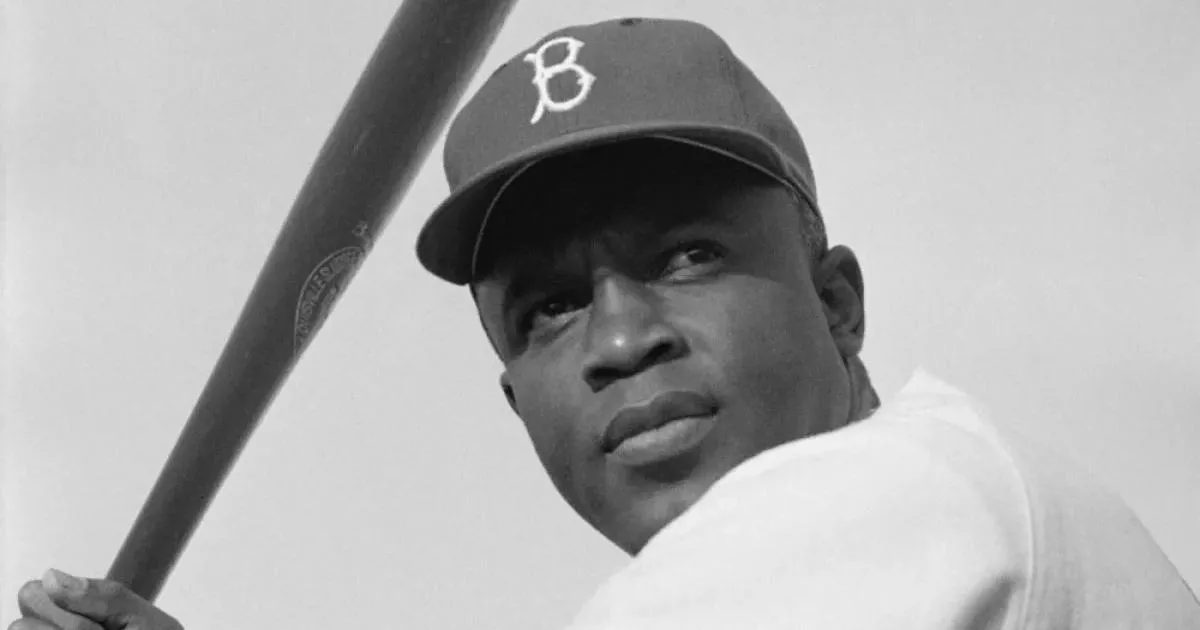Jackie Robinson was an American professional baseball player who broke Major League Baseball's color barrier on April 15, 1947, when he started at first base for the Brooklyn Dodgers. His signing ended racial segregation in professional baseball, which had excluded Black players since the 1880s, relegating them to the Negro leagues. Robinson's courage and exceptional talent paved the way for greater racial equality in sports and beyond.
January 31, 1919: Jack Roosevelt Robinson Born
On January 31, 1919, Jack Roosevelt Robinson was born in Cairo, Georgia, to Mallie and Jerry Robinson. He was the youngest of five children.
1920: Family Moves to Pasadena
In 1920, after Jackie Robinson's father left the family, they moved to Pasadena, California.
1922: Rachel Isum Born
In 1922, Rachel Isum, Jackie Robinson's future wife, was born. She later met Robinson while a freshman at UCLA.
1935: Graduation and Enrollment
In 1935, Jackie Robinson graduated from Washington Junior High School and enrolled at John Muir Technical High School.
1936: Tennis and Baseball Accomplishments
In 1936, Jackie Robinson won the junior boys singles championship in the annual Pacific Coast Negro Tennis Tournament and earned a place on the Pomona annual baseball tournament all-star team.
1936: Inspiration to pursue sports
In 1936, Jackie Robinson's older brothers, Frank and Mack inspired Jackie to pursue his interest in sports.
January 25, 1938: Arrest at PJC
On January 25, 1938, Jackie Robinson was arrested after disputing the detention of a black friend by police at Pasadena Junior College. He received a two-year suspended sentence.
May 7, 1938: Broad-Jump Record
On May 7, 1938, Jackie Robinson broke an American junior college broad-jump record with a jump of 25 6+1⁄2 in. at Pasadena Junior College.
1939: Enrollment at UCLA
After graduating from PJC in spring 1939, Jackie Robinson enrolled at UCLA, where he became the school's first athlete to win varsity letters in four sports.
1939: Football Team
In 1939, Jackie Robinson was one of four black players on the Bruins' football team at UCLA, which was considered college football's most integrated team. They went undefeated with four ties at 6–0–4.
1940: NCAA Championship in Long Jump
In 1940, Jackie Robinson won the NCAA championship in the long jump at 24 ft 10+1⁄4 in (7.58 m).
1940: Left college for job
In the spring of 1940, Jackie Robinson left college just shy of graduation and took a job as an assistant athletic director with the government's National Youth Administration (NYA) in Atascadero, California.
1940: Led the NCAA in punt return average
Jackie Robinson led the NCAA in punt return average in the 1939 and 1940 seasons.
July 1941: Army OCS Guidelines
In July 1941, the Army's initial guidelines for Officer Candidate School (OCS) were drafted as race-neutral, but few black applicants were admitted until subsequent directives by Army leadership.
December 1941: Return to California
In December 1941, Jackie Robinson returned to California to pursue a career as running back for the Los Angeles Bulldogs of the Pacific Coast Football League after playing football for the Honolulu Bears. However, the Japanese attack on Pearl Harbor ended his nascent football career.
1942: Drafted into the Army
In 1942, Jackie Robinson was drafted and assigned to a segregated Army cavalry unit at Fort Riley, Kansas.
January 1943: Commissioned as Second Lieutenant
In January 1943, Jackie Robinson was commissioned as a second lieutenant after finishing Officer Candidate School (OCS) and got formally engaged to Rachel Isum.
July 6, 1944: Bus Incident
On July 6, 1944, Jackie Robinson was taken into custody by military police after refusing to move to the back of an Army bus when ordered by the driver.
August 1944: Acquittal
In August 1944, Jackie Robinson was acquitted by an all-white panel of nine officers on charges of insubordination during questioning.
November 1944: Honorable Discharge
In November 1944, Jackie Robinson received an honorable discharge from the Army and met a former player for the Kansas City Monarchs of the Negro American League, who encouraged Robinson to write to the Monarchs for a tryout.
1944: Athletic Director at Samuel Huston College
After his discharge in 1944, Jackie Robinson accepted a job as the athletic director at Samuel Huston College in Austin, which included coaching the school's basketball team for the 1944–45 season.
August 28, 1945: Branch Rickey Interviews Jackie Robinson
On August 28, 1945, Branch Rickey interviewed Jackie Robinson to assess his ability to withstand racial abuse without reacting angrily, a concern stemming from Robinson's previous confrontations with law enforcement. Rickey sought a player with the strength to "turn the other cheek" to racial antagonism, leading to a commitment from Robinson.
November 1, 1945: Rickey Commits to Formally Signing Robinson
Before November 1, 1945, Branch Rickey committed to formally signing Robinson to the Montreal Royals.
1945: Joins Kansas City Monarchs
In early 1945, Jackie Robinson accepted a contract to play professional baseball for the Kansas City Monarchs in the Negro leagues for $400 per month.
February 10, 1946: Jackie Robinson Marries Isum
On February 10, 1946, Jackie Robinson and Isum were married by their friend, the Rev. Karl Downs.
March 17, 1946: Jackie Robinson's Royals Debut
On March 17, 1946, Jackie Robinson made his debut for the Montreal Royals at Daytona Beach's City Island Ballpark in an exhibition game against the Dodgers, becoming the first black player to openly play for a minor league team against a major league team since the 1880s.
April 18, 1946: Jackie Robinson's Professional Debut
On April 18, 1946, Jackie Robinson made his professional debut with the Montreal Royals against the Jersey City Giants at Roosevelt Stadium, marking the first time the color barrier had been broken in a game between two minor league clubs. Robinson had four hits in five at bats, including a three-run home run, and stole two bases in the Royals' 14–1 victory.
1946: Robinson Arrives at Spring Training with the Montreal Royals
In 1946, Jackie Robinson arrived at Daytona Beach, Florida, for spring training with the Montreal Royals of the Class AAA International League, despite the Royals' manager Clay Hopper's request for him to be assigned elsewhere.
1946: Robinson Plays for Montreal Royals
In 1946, Jackie Robinson played for the Montreal Royals, residing at 8232 avenue de Gaspé near Jarry Park.
1946: Robinson Assigned to the Montreal Royals
In 1946, Jackie Robinson was assigned to the Montreal Royals, marking his entry into the International League as the first black baseball player since the 1880s, in what was later called "The Noble Experiment".
1946: Birth of Jackie Robinson Jr.
In 1946, Jackie Robinson's eldest son, Jackie Robinson Jr., was born.
April 11, 1947: Jackie Robinson's Preseason Exhibition Game
On April 11, 1947, Jackie Robinson made his debut as a Dodger wearing uniform number 42 in a preseason exhibition game against the New York Yankees at Ebbets Field.
April 15, 1947: Jackie Robinson breaks the color line
On April 15, 1947, Jackie Robinson started at first base for the Brooklyn Dodgers, breaking the color line in Major League Baseball.
April 22, 1947: Racial Abuse from Phillies Players
On April 22, 1947, during a game against the Philadelphia Phillies, Phillies players and manager Ben Chapman directed racial slurs at Jackie Robinson from their dugout, uniting the Dodgers in their support for him.
July 5, 1947: Larry Doby Breaks American League Color Barrier
On July 5, 1947, Larry Doby broke the color barrier in the American League, just 11 weeks after Jackie Robinson broke the color barrier in the National League.
1947: Beginning of Robinson's Career
In 1947, Jackie Robinson began his Major League Baseball career at the age of 28, playing for the Brooklyn Dodgers.
1947: Robinson Plays in the World Series
In 1947, Jackie Robinson played in all seven games of the World Series after the Brooklyn Dodgers won the National League pennant. The Dodgers lost in Game 7 to the Yankees, but Robinson became the first black player to play in the World Series.
1947: Support from Major League Players
In 1947, Jackie Robinson received encouragement from several major league players, including Lee "Jeep" Handley and Hank Greenberg, who had dealt with ethnic epithets during his own career.
1947: Jackie Robinson wins Rookie of the Year Award
In 1947, Jackie Robinson won the Major League Rookie of the Year Award which encompassed both leagues.
1947: Rookie of the Year Award
In 1947, Jackie Robinson won the inaugural Rookie of the Year Award.
1947: Threat of Strike by St. Louis Cardinals
In 1947, there was a threat that the St. Louis Cardinals would strike if Jackie Robinson played, attempting to spread the walkout across the National League. The strike did not occur after the National League President and Baseball Commissioner threatened to suspend any players who participated, leading to increased support for Robinson from the sports media.
1947: Start of Balanced Offensive Strategies
Jackie Robinson's career, starting in 1947, is generally considered to mark the beginning of the post–"long ball" era in baseball, in which balanced offensive strategies using footspeed to create runs through aggressive baserunning replaced a reliance on raw power-hitting. From 1947 to 1953, Robinson averaged more than 110 runs per season.
1947: Robinson's Rookie Season
Jackie Robinson's rookie season ended in 1947.
February 1948: Robinson Signs Contract with Dodgers
In February 1948, Jackie Robinson signed a $12,500 contract with the Dodgers, while also engaging in a vaudeville tour and a speaking tour of the South during the off-season. He underwent surgery on his right ankle and reported to training camp overweight.
March 1948: Robinson Takes Over Second Base
In March 1948, after Stanky's trade to the Boston Braves, Jackie Robinson took over second base for the Dodgers.
August 1948: Dodgers Briefly Move into First Place
In late August 1948, the Dodgers briefly moved into first place in the National League but ultimately finished third.
August 29, 1948: Robinson Hits for the Cycle
On August 29, 1948, Jackie Robinson hit for the cycle in a 12–7 win against the St. Louis Cardinals, achieving a home run, a triple, a double, and a single in the same game.
1948: Batting average
In 1948, Jackie Robinson had a .296 batting average. This prompted him to seek batting help that resulted in improving his play in 1949.
1948: Support from Pee Wee Reese
In 1948, Pee Wee Reese is said to have put his arm around Jackie Robinson in response to fans who shouted racial slurs at Robinson before a game in Boston or Cincinnati.
1948: Truman's Military Desegregation
In 1948, President Harry Truman desegregated the military, contributing to increased equality for blacks alongside Jackie Robinson's breaking of the baseball color line.
1949: Song About Jackie Robinson
In 1949, Buddy Johnson's song, "Did You See Jackie Robinson Hit That Ball?", reached number 13 on the charts, with Count Basie recording a famous version. The Dodgers also won the National League pennant but lost the 1949 World Series to the New York Yankees.
1949: MVP Award and All-Star Selection
In 1949, Jackie Robinson significantly improved his batting with guidance from George Sisler, leading to a .342 average, 37 stolen bases, and being second in the league for doubles and triples. Due to this, Robinson earned the National League Most Valuable Player Award and was voted as the starting second baseman for the 1949 All-Star Game, the first to include black players.
1949: National League Most Valuable Player Award
In 1949, Jackie Robinson won the National League Most Valuable Player Award, the first black player to be so honored.
1949: Separate Rookie of the Year Awards
In 1949, separate National and American League Rookie of the Year honors were first awarded, two years after Jackie Robinson won the inaugural Major League Baseball Rookie of the Year Award in 1947.
1949: Testimony Before HUAC
In July 1949, Jackie Robinson was called to testify before the United States House of Representatives' Committee on Un-American Activities (HUAC) regarding statements made by Paul Robeson. He reluctantly agreed to testify to avoid potential negative impacts on his career.
1950: Leads League in Double Plays and Film Biography Release
In 1950, Jackie Robinson led the National League in double plays made by a second baseman, with 133. Also in 1950, his salary was the highest any Dodger had been paid to that point, at $35,000. The film biography of Robinson's life, The Jackie Robinson Story, was released, with Robinson playing himself.
1950: League Leader in Fielding
In 1950, Jackie Robinson led the league in fielding among second basemen.
1950: The Jackie Robinson Story Film
In 1950, Jackie Robinson portrayed himself in the motion picture The Jackie Robinson Story.
1950: Birth of Sharon Robinson
In 1950, Jackie Robinson's daughter, Sharon Robinson, was born.
1950: Rickey's Departure and Robinson's Disappointment
In late 1950, Walter O'Malley referred to Jackie Robinson as "Rickey's prima donna". Branch Rickey's contract as the Dodgers' team President expired, and he left due to disagreements with O'Malley, becoming general manager of the Pittsburgh Pirates. Robinson was disappointed and expressed his appreciation to Rickey.
October 3, 1951: Dodgers Lose Pennant
On October 3, 1951, the Dodgers lost the pennant after Bobby Thomson's famous home run, known as the Shot Heard 'Round the World. Jackie Robinson ensured Thomson touched all the bases, finishing the season with 106 runs scored, a .335 batting average, and 25 stolen bases.
1951: Offer to Manage Montreal Royals
Before the 1951 season, Walter O'Malley reportedly offered Jackie Robinson the job of manager of the Montreal Royals, to be effective at the end of Robinson's playing career, although reports differed as to whether a position was ever formally offered.
1951: League Leader in Double Plays and Pennant Contention
During the 1951 season, Jackie Robinson led the National League in double plays made by a second baseman for the second year in a row, with 137. He also kept the Dodgers in contention for the 1951 pennant, hitting a game-tying hit in the 13th inning and a game-winning home run in the 14th inning of the last game of the regular season. This forced a playoff series against the New York Giants.
1951: League Leader in Fielding
In 1951, Jackie Robinson led the league in fielding among second basemen for the second consecutive year.
1952: Challenging Racial Record
In 1952, Jackie Robinson finished the year with 104 runs, a .308 batting average, and 24 stolen bases. He recorded a career-high on-base percentage of .436. The Dodgers won the National League pennant before losing the 1952 World Series to the New York Yankees in seven games. On the television show Youth Wants to Know, Robinson challenged the Yankees' general manager, George Weiss, on the racial record of his team.
1952: Birth of David Robinson
In 1952, Jackie Robinson's youngest son, David Robinson, was born.
1953: Jackie Robinson's Runs Scored
From 1947 to 1953 Jackie Robinson averaged more than 110 runs.
1953: Death Threats and Racial Advocacy
In 1953, Jackie Robinson had 109 runs, a .329 batting average, and 17 steals, leading the Dodgers to another National League pennant. He also served as editor for Our Sports magazine and criticized segregated establishments, leading to integration in some places. However, Robinson's continued success spawned a string of death threats.
1954: All-Star Season
From 1949 through 1954, Jackie Robinson was an All-Star for six consecutive seasons.
1954: Best Day at the Plate
In 1954, Jackie Robinson had 62 runs scored, a .311 batting average, and 7 steals. His best day at the plate was on June 17, when he hit two home runs and two doubles.
1955: World Series Championship
In 1955, Jackie Robinson contributed to the Dodgers' World Series championship.
1955: World Series Victory and Declining Performance
In 1955, the Dodgers defeated the New York Yankees in the World Series, marking Jackie Robinson's only championship. However, 1955 was the worst year of Robinson's individual career, hitting .256 and stealing only 12 bases, and he did not play in Game 7 of the World Series.
December 1956: NAACP Spingarn Medal
In December 1956, the NAACP recognized Jackie Robinson with the Spingarn Medal, which it awards annually for the highest achievement by an African-American.
1956: Final Season and Retirement Decision
In 1956, Jackie Robinson had 61 runs scored, a .275 batting average, and 12 steals. After striking out to end Game 7 of the 1956 World Series, he was traded to the New York Giants, but the trade was never completed because Robinson had agreed to become an executive with Chock full o'Nuts and sold exclusive rights to his retirement story to Look magazine.
1956: End of Robinson's Career
The 1956 season marked the end of Jackie Robinson's 10-season career in Major League Baseball, all with the Brooklyn Dodgers.
January 5, 1957: Robinson's Retirement
Jackie Robinson retired from baseball at age 37 on January 5, 1957.
1957: Vice President at Chock full o'Nuts & Chairs NAACP Freedom Fund Drive
In 1957, Jackie Robinson became the vice president for personnel at Chock full o'Nuts, becoming the first black person to serve as vice president of a major American corporation. Also in 1957, he chaired the NAACP's million-dollar Freedom Fund Drive.
July 1959: Red Sox Integrate Roster
In July 1959, the Boston Red Sox became the final major league team to integrate its roster, more than 14 years after Jackie Robinson's humiliating tryout.
October 1959: Robinson Protests Segregation at Greenville Airport
In October 1959, Jackie Robinson protested racial segregation by entering the whites-only waiting room at Greenville Municipal Airport, refusing to leave when asked by airport police. He then delivered a speech to the NAACP in Greenville, South Carolina, advocating for complete freedom and urging black citizens to vote and protest their second-class citizenship.
1960: Supports Richard Nixon for President
In the 1960 presidential race, Jackie Robinson supported Richard Nixon against John F. Kennedy, later praising Kennedy for his stance on civil rights.
1962: Elected to Baseball Hall of Fame
In 1962, Jackie Robinson was elected to the Baseball Hall of Fame in his first year of eligibility. He encouraged voters to consider only his on-field qualifications, rather than his cultural impact on the game, becoming the first black player inducted into the Cooperstown museum.
1964: Founds Freedom National Bank
In 1964, Jackie Robinson helped found Freedom National Bank with Harlem businessman Dunbar McLaurin. This bank was a black-owned and operated commercial bank based in Harlem.
1964: Opposes Barry Goldwater's Presidential Candidacy
In 1964, Jackie Robinson was angered by the presidential election candidacy of conservative Republican Senator Barry Goldwater of Arizona, who had opposed the Civil Rights Act of 1964.
1965: Becomes Analyst for ABC's Major League Baseball Game of the Week
In 1965, Jackie Robinson became an analyst for ABC's Major League Baseball Game of the Week telecasts, making him the first black person to hold such a position.
1966: Special Assistant for Community Affairs
In 1966, Jackie Robinson became special assistant for community affairs when Nelson Rockefeller was re-elected governor of New York.
1966: Hired as General Manager for Brooklyn Dodgers of Continental Football League
In 1966, Jackie Robinson was hired as the general manager for the short-lived Brooklyn Dodgers of the Continental Football League.
1967: Leaves NAACP Board
In 1967, Jackie Robinson ended his service on the board of the NAACP.
1968: Supports Hubert Humphrey for President
In 1968, Jackie Robinson broke with the Republican party and supported Hubert Humphrey against Richard Nixon in that year's presidential election.
1968: Jackie Robinson Suffers Heart Attack
In 1968, Jackie Robinson suffered a heart attack.
1969: Turns Down Invitation to Old-Timers' Game
In 1969, Jackie Robinson protested against the major leagues' ongoing lack of minority managers and central office personnel, and he turned down an invitation to appear in an old-timers' game at Yankee Stadium.
1970: Establishes Jackie Robinson Construction Company
In 1970, Jackie Robinson established the Jackie Robinson Construction Company to build housing for low-income families.
June 17, 1971: Death of Jackie Robinson Jr.
On June 17, 1971, Jackie Robinson Jr. was killed in an automobile accident at age 24.
1971: Appointed to New York State Athletic Commission
In 1971, Jackie Robinson was appointed to the New York State Athletic Commission by Nelson Rockefeller.
1971: Death of Jackie Robinson Jr.
In 1971, Jackie Robinson's eldest son, Jackie Robinson Jr., passed away.
June 4, 1972: Dodgers Retire Robinson's Uniform Number
On June 4, 1972, the Dodgers retired Jackie Robinson's uniform number, 42, alongside those of former teammates Roy Campanella (39) and Sandy Koufax (32).
October 15, 1972: Final Public Appearance at World Series
On October 15, 1972, Jackie Robinson made his final public appearance at Riverfront Stadium in Cincinnati, throwing the ceremonial first pitch before Game 2 of the World Series. He accepted a plaque honoring the twenty-fifth anniversary of his MLB debut but expressed his desire to see a black manager in baseball.
October 24, 1972: Death of Jackie Robinson
October 24, 1972 marks the death of Jackie Robinson.
October 27, 1972: Funeral Service Held for Jackie Robinson
On October 27, 1972, Jackie Robinson's funeral service was held at Upper Manhattan's Riverside Church, attracting 2,500 mourners. Many of his former teammates and other famous figures served as pallbearers, and the Rev. Jesse Jackson gave the eulogy.
1972: Posthumous Awards
After his death in 1972, Jackie Robinson was posthumously awarded the Congressional Gold Medal and Presidential Medal of Freedom.
1972: Part-Time Commentator for Montreal Expos Telecasts
In 1972, Jackie Robinson served as a part-time commentator on Montreal Expos telecasts.
1974: Frank Robinson Hired as Manager
Following the 1974 season, the Cleveland Indians hired Frank Robinson (no relation to Jackie) as their manager, fulfilling Jackie Robinson's wish after his death to see a black manager in baseball.
1976: Jackie Robinson House Declared National Historic Landmark
In 1976, Jackie Robinson's home in Brooklyn, the Jackie Robinson House, was declared a National Historic Landmark.
1978: Colonial Park Renamed After Robinson
In 1978, Colonial Park in Harlem was renamed after Jackie Robinson.
1982: USPS Postage Stamp Honoring Robinson
In 1982, Jackie Robinson was honored by the United States Postal Service on a postage stamp.
March 26, 1984: Presidential Medal of Freedom
On March 26, 1984, President Ronald Reagan posthumously awarded Jackie Robinson the Presidential Medal of Freedom.
1984: Charter Member of UCLA's Athletics Hall of Fame
In 1984, Jackie Robinson was among the 25 charter members of UCLA's Athletics Hall of Fame.
1987: Rookie of the Year Award Renamed
In 1987, both the National and American League Rookie of the Year Awards were renamed the "Jackie Robinson Award" in honor of Jackie Robinson, the first recipient.
1990: Jackie Robinson Ballpark Renaming
In 1990, City Island Ballpark in Daytona Beach, Florida was renamed Jackie Robinson Ballpark.
1990: Rachel Robinson Serves on Board of Freedom National Bank until it closed
Until it closed in 1990, Rachel Robinson served on the board of the Freedom National Bank.
April 15, 1997: MLB Retires Robinson's Jersey Number 42
On April 15, 1997, Jackie Robinson's jersey number, 42, was retired throughout Major League Baseball, the first time any jersey number had been retired throughout one of the four major American sports leagues.
1997: MLB Retires Number 42
In 1997, MLB retired Jackie Robinson's uniform number, 42, across all Major League teams.
1997: Interboro Parkway Renamed
In 1997, New York City renamed the Interboro Parkway in Jackie Robinson's honor.
1997: Bronze Sculpture Erected in Pasadena
In 1997, a $325,000 bronze sculpture by artists Ralph Helmick, Stu Schecter, and John Outterbridge depicting oversized nine-foot busts of Robinson and his brother Mack was erected at Garfield Avenue in Pasadena.
1997: Jackie Robinson Commemorative Coin
In 1997, the United States Mint issued a Jackie Robinson commemorative silver dollar, and five-dollar gold coin.
1999: USPS Postage Stamp Honoring Robinson
In 1999, Jackie Robinson was honored by the United States Postal Service on a postage stamp.
1999: Named One of Time's 100 Most Influential People
In 1999, Jackie Robinson was named by Time on its list of the 100 most influential people of the 20th century. In the same year, he was elected to the Major League Baseball All-Century Team and ranked No. 44 on The Sporting News list of "Baseball's 100 Greatest Players".
1999: All-Century Team Selection
In 1999, Jackie Robinson was one of 30 players named to the Major League Baseball All-Century Team.
2000: USPS Postage Stamp Honoring Robinson
In 2000, Jackie Robinson was honored by the United States Postal Service on a postage stamp.
2000: NHL Retires Wayne Gretzky's Number 99
In 2000, the NHL retired Wayne Gretzky's number 99, which was the only other league wide retirement after Jackie Robinson's number retirement.
2002: Included on List of 100 Greatest African Americans
In 2002, Molefi Kete Asante included Jackie Robinson on his list of 100 Greatest African Americans.
April 15, 2004: Jackie Robinson Day
On April 15, 2004, MLB adopted a new annual tradition, "Jackie Robinson Day", on which every player on every team wears no. 42.
2004: MLB Establishes Jackie Robinson Day
In 2004, MLB began honoring Jackie Robinson by allowing players to wear number 42 on April 15, Jackie Robinson Day, an annual observance.
2004: Jackie Robinson Award
Since 2004, the Aflac National High School Baseball Player of the Year has been presented with the "Jackie Robinson Award".
March 2, 2005: Congressional Gold Medal
On March 2, 2005, President George W. Bush gave Jackie Robinson's widow the Congressional Gold Medal, the highest civilian award bestowed by Congress. Robinson was only the second baseball player to receive the award, after Roberto Clemente.
November 1, 2005: Unveiling of Reese and Robinson Statue
On November 1, 2005, a statue by sculptor William Behrends depicting Pee Wee Reese with his arm around Jackie Robinson was unveiled at KeySpan Park.
November 2006: Jackie Robinson Rotunda Announced at Citi Field Groundbreaking
At the November 2006 groundbreaking for Citi Field, the new ballpark for the New York Mets, it was announced that the main entrance would be called the Jackie Robinson Rotunda.
August 20, 2007: Induction into the California Hall of Fame
On August 20, 2007, California Governor Arnold Schwarzenegger and his wife, Maria Shriver, announced that Jackie Robinson was inducted into the California Hall of Fame, located at The California Museum for History, Women and the Arts in Sacramento.
2007: Players Invited to Wear Number 42 on Jackie Robinson Day
In 2007, for the 60th anniversary of Jackie Robinson's major league debut, MLB invited players to wear the number 42 on Jackie Robinson Day, initiated by Ken Griffey Jr.
April 15, 2008: Jackie Robinson Foundation Announces Museum Opening
On April 15, 2008, Rachel Robinson announced that the Jackie Robinson Foundation would open a museum devoted to Jackie in Lower Manhattan in 2010.
June 25, 2008: MLB Installs New Plaque at Baseball Hall of Fame
On June 25, 2008, MLB installed a new plaque for Jackie Robinson at the Baseball Hall of Fame commemorating his off-the-field impact on the game as well as his playing statistics.
April 16, 2009: Jackie Robinson Rotunda Dedicated at Citi Field Opening
On April 16, 2009, the Jackie Robinson Rotunda was dedicated at the opening of Citi Field. It honors Robinson with large quotations and a statue of his number, 42.
2009: MLB Personnel Wear Number 42 on Jackie Robinson Day
In 2009, all of MLB's uniformed personnel (including players) wore number 42 on April 15, a tradition that has continued every year since on that date.
2010: Projected opening of Jackie Robinson Museum
In 2010, the Jackie Robinson Foundation would open a museum devoted to Jackie in Lower Manhattan
2011: Plaque Placed at Robinson's Montreal Home
In 2011, the U.S. placed a plaque at Jackie Robinson's Montreal home to honor the ending of segregation in baseball. The house, at 8232 avenue de Gaspé near Jarry Park, was Robinson's residence when he played for the Montreal Royals during 1946.
April 14, 2013: New Mural Unveiled at Jackie Robinson Stadium
On April 14, 2013, a new mural of Jackie Robinson by Mike Sullivan was unveiled at Jackie Robinson Stadium.
2013: Mariano Rivera Retires as Last Player to Wear Number 42
In 2013, Mariano Rivera of the Yankees retired as the last player in Major League Baseball to wear jersey number 42 on a regular basis.
November 22, 2014: UCLA Retires Number 42
On November 22, 2014, UCLA announced that it would officially retire the number 42 across all university sports, effective immediately.
2016: Jackie Robinson PBS Documentary
In 2016, a PBS documentary titled Jackie Robinson was released, directed by Ken Burns, featuring Jamie Foxx as the voice of Robinson.
November 19, 2017: Jersey Sold at Auction
On November 19, 2017, a jersey that Jackie Robinson brought home with him after his rookie season ended in 1947 was sold at an auction for $2.05 million. The price was the highest ever paid for a post-World War II jersey.
2017: Statue of Robinson Unveiled at Dodger Stadium
In 2017, a statue of Jackie Robinson, created by sculptor Branly Cadet, was unveiled at Dodger Stadium, marking the first statue the Dodgers ever unveiled.
2020: Ranked on The Athletic's "Baseball 100" List
In 2020, Jackie Robinson was ranked at number 42 on The Athletic's "Baseball 100" list, complied by sportswriter Joe Posnanski.
2022: Robinson's Rushing Record
As of 2022, Jackie Robinson holds the school football record for highest rushing yards per carry in a season, achieving 12.2 yards per attempt on 42 carries in 1939.
2022: NBA Retires Bill Russell's Number 6
In 2022, the NBA retired Bill Russell's number 6, which was the only other league wide retirement after Jackie Robinson's number retirement and Wayne Gretzky's number 99 retirement.
2022: Jackie Robinson Museum Opened
The Jackie Robinson Museum opened in 2022. The New York Yankees honor Robinson with a plaque in Monument Park.
2024: Value of 1950 Salary in 2024 Dollars
In 1950, Jackie Robinson's salary was $35,000, which is equivalent to $457,420 in 2024 dollars.
2025: Rachel Robinson Remains an Officer of the Jackie Robinson Foundation
As of 2025, Rachel Robinson, at 102 years old, remains an officer of the Jackie Robinson Foundation.
Mentioned in this timeline
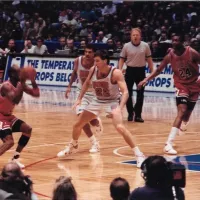
Basketball is a team sport played on a rectangular court...
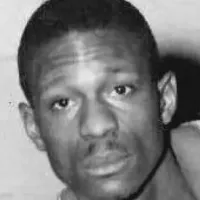
Bill Russell was a dominant American professional basketball player primarily...
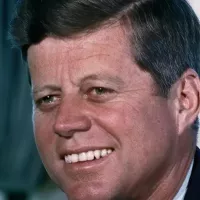
John F Kennedy JFK was the th U S President...
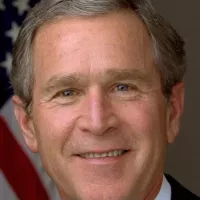
George W Bush the rd U S President - is...

Wayne Gretzky a Canadian former professional ice hockey player widely...
California is a U S state on the Pacific Coast...
Trending

7 months ago Josh Jacobs infuriated by Raiders' Chiefs logo dance; former player recalls backfire.
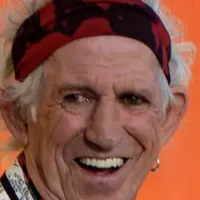
Keith Richards is a renowned English musician songwriter singer and record producer best known as a founding member guitarist and...
6 months ago Charley Hull shines at Women's PGA Championship, pursuing major breakthrough after near misses.

4 months ago Colorado Lottery results: Pick 3 Midday and Evening winning numbers for August 14, 2025.
Spirit Airlines is an American ultra-low-cost carrier based in Florida operating scheduled flights across the U S Caribbean and Latin...
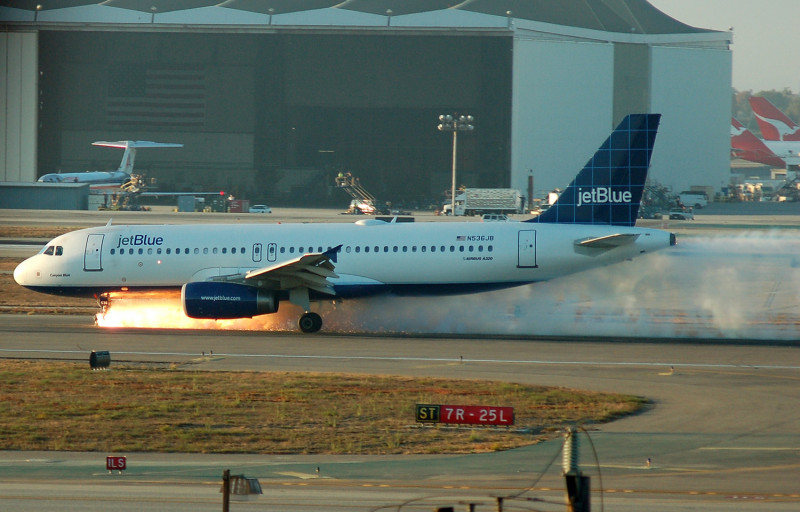
1 month ago Widespread Flight Cancellations and Delays Ground Thousands of Passengers Across the US
Popular

Candace Owens is an American conservative political commentator and author...

Ilhan Omar is an American politician currently serving as the...

XXXTentacion born Jahseh Dwayne Ricardo Onfroy was a controversial yet...

Tom Cotton is an American politician and Army veteran currently...
The Kennedy Center Honors are annual awards recognizing individuals and...

Kelsey Grammer is an accomplished American actor producer and singer...
